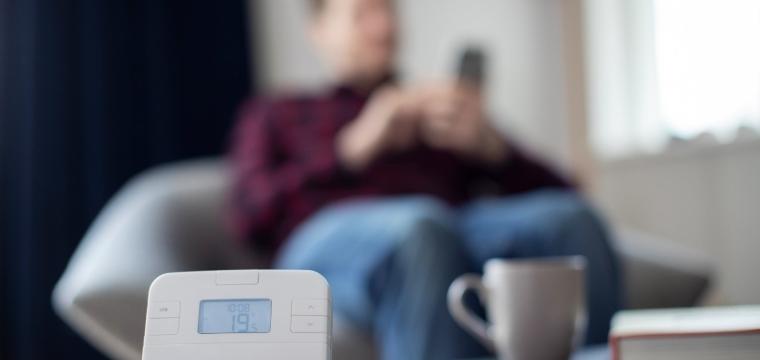When it comes to making your home greener and more energy efficient, it can be difficult to know where to begin. Add to this the new world of terminology that needs to be navigated in this area, and it can feel quite overwhelming.
This guide will explain some of the key terms you’re likely to come across when making green upgrades to your home, including if you’re applying to the Green Homes Wales scheme. It aims to put ‘carbon jargon’ into plain English and hopefully demonstrate that it’s more straightforward than you may think.
Retrofitting
This has nothing to do with the 70’s, unless that’s when your home was built. Retrofitting is simply the process of any improvement work on any existing building to improve its energy efficiency.
Carbon
Carbon, or carbon dioxide, is a heat-trapping emission that acts like a blanket when released into the air, holding heat in the atmosphere and warming the planet. Some of the biggest emitters of carbon are traditional energy sources like coal and gas, which have historically been used to fuel power stations and therefore our homes.
Net zero
Net zero is the position at which the amount of greenhouse gases produced is equal to the amount of greenhouse gases that are removed from the atmosphere. This is achieved through both carbon reduction and carbon removal (see definitions below). Wales, like the UK, has committed to reaching net zero carbon emissions by 2050.
Carbon reduction
Also sometimes referred to as carbon abatement, this is the reduction in the amount of carbon being released into the atmosphere as a result of implementing energy efficient measures. So, by putting that insulation in your roof or draught-proofing your doors and windows, you are retaining more heat in your home and needing to use less gas and electricity to heat it.
Carbon removal
This refers to the process of removing carbon dioxide from the atmosphere through methods such as reforestation.
Carbon neutral
Carbon neutral is often used interchangeably with net zero, but they’re not the same. The key differences between the two are generally that 1) net zero encompasses all greenhouse gases, not just carbon, and 2) net zero has a focus on reduction as well as removal.
Carbon footprint
We each have our own carbon footprint, generated from the actions we take day to day - from how we travel and how we live to what we eat. Calculating your carbon footprint is the first step in understanding what actions you can take to reduce it. There are a variety of online tools that allow you to do this. Steps to reduce your carbon footprint could include making small behavioural changes (like turning off lights when not in use), opting for low-carbon travel, or improving the energy efficiency of your home.
Renewable energy
One of the best ways to reduce your carbon emissions is to switch to renewable energy. Renewable energy is energy that comes from natural sources that are constantly being replenished - wind and sunlight for example - and have a low or zero carbon footprint. It is estimated that about 42% of the UK power grid comes from renewable sources, with wind being the biggest contributor.
Heat pumps
Heat pumps allow you to generate your own renewable energy at home through a low-carbon heating system. They work by taking heat energy from the air or ground outside and pumping it through a heat exchange surface onto a compressor, which causes its temperature to rise. It’s then transferred into your home’s central heating or hot water system. For this technology to work best, it’s essential that effective energy efficiency is installed in the building, particularly good insulation.
Solar PV
Solar PV, or solar photovoltaic panels, are installed on rooftops to turn sunlight into electricity. The solar cells inside the panels contain semiconductors that generate direct current (DC) electricity, which is then passed through an inverter and converted to an alternating current (AC), making it usable in your home.
A key advantage of solar PV is that you can sell any surplus electricity back to the grid, or you can install a battery and store the excess energy for later use. Solar panels don’t need direct sunlight to work, and they can still produce electricity on a cloudy day or during winter.
Microgeneration Certification Scheme (MCS)
MCS is a standards organisation that certifies low-carbon energy technology products, installers and their installations, providing a mark of quality, competence and compliance for customers. MCS have a directory of certified contractors and products to help homeowners find trusted support. You can find more information about MCS on their website.
TrustMark
TrustMark is a government endorsed quality scheme that provides homeowners with access to registered trade professionals that maintain the required standards of technical competence, trading practices and customer service. Like MCS, they provide a directory of accredited professionals including retrofit coordinators, retrofit assessors and registered installers. For further information, visit their website.
PAS 2035
PAS 2035 was introduced in 2019 as a clear framework for best practice in the energy retrofit of domestic properties. It takes an important ‘whole of house’ view to ensure that work undertaken is right for the property and the measures work together to maximise energy improvement and moisture control through robust ventilation.
The framework is comprehensive, but the good news is that it has to be managed by a qualified Retrofit Coordinator so you don’t have to worry about doing this yourself. Green Homes Wales offers homeowners fully funded access to a Retrofit Coordinator, who will make sure that this quality standard is embedded in any projects you take forward.
PAS 2030
While PAS 2025 is a framework of standards, PAS 2030 is the certification required by installers to be able to carry out energy efficiency measures on domestic properties. It ensures high quality and compliant installation of the measures. This is a key consideration to check out with any installer you are looking to engage with.
For further help and advice for homeowners, and business, in Wales, there is a growing base of free, independent support available. This includes the Climate Action Wales website and the Nest Scheme advisors who are available Monday – Friday 9am- 6pm on the free number 0808 808 2244.


